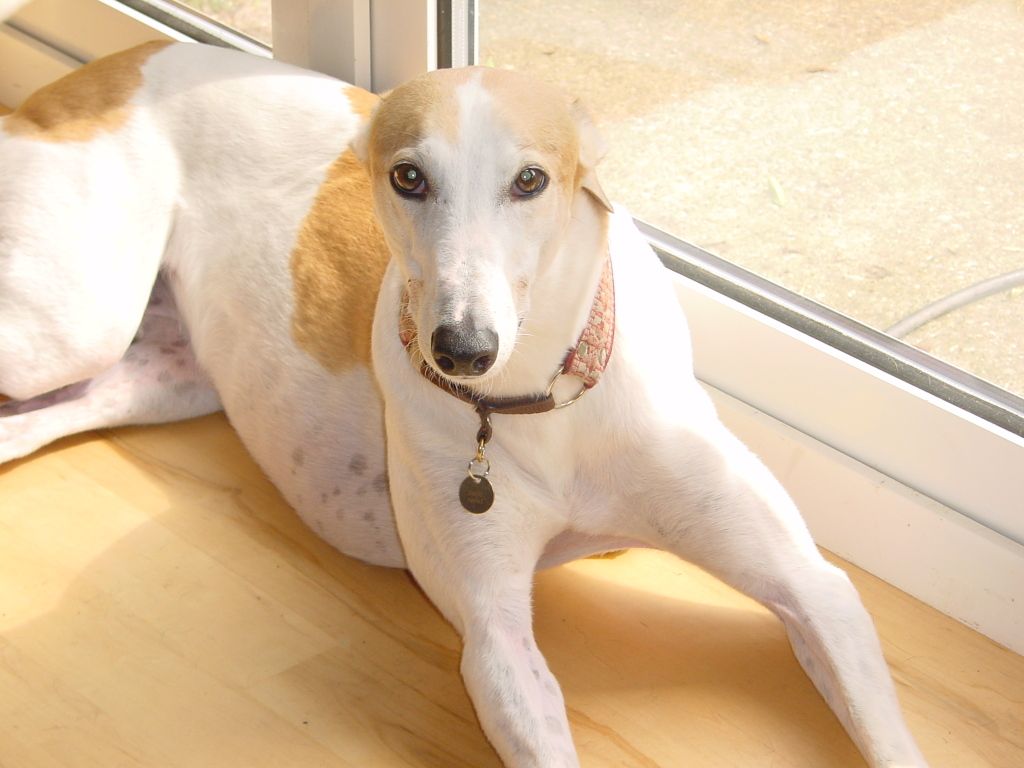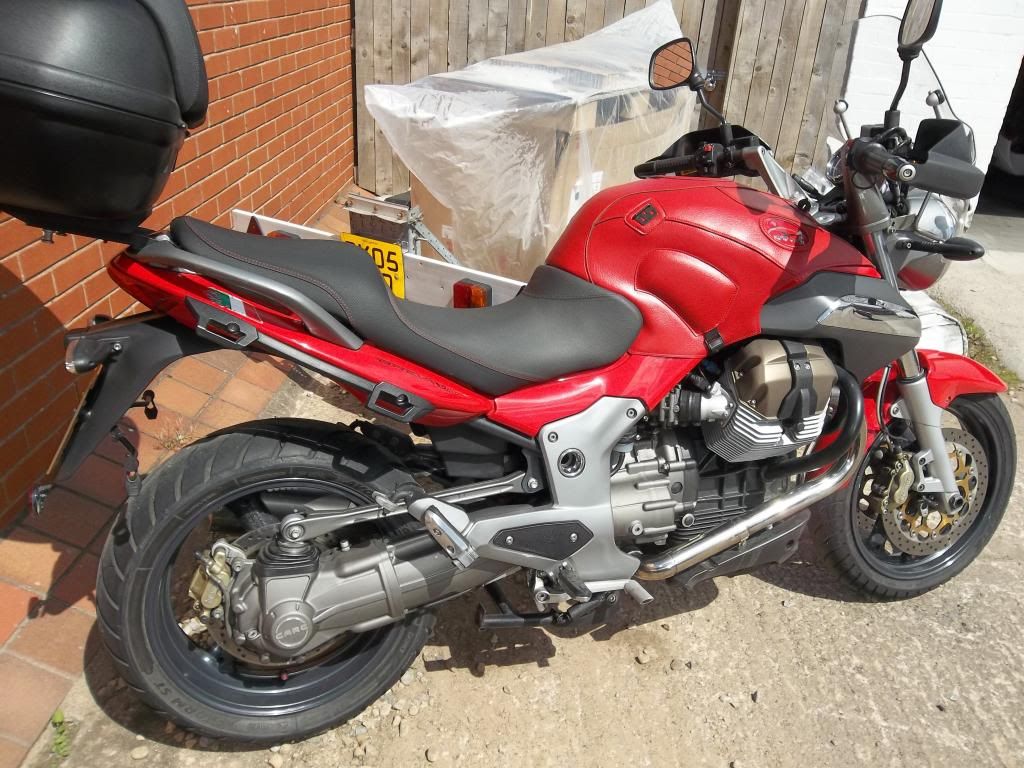Post by anon on Feb 15, 2007 20:45:42 GMT
YAMAHA DIVERSION CLUB
TECHNICAL LIBRARY
ARTICLE 03/05 - REPLACING FORK SEALS ON AN XJ600S
Written by Trevor James July 2003
This procedure was performed on a 1994 XJ600S. Later models have twin front disc brakes and an oil cooler (which may or may not get in the way), and some of the specifications are a little different. Also, some of the torque wrench settings are different.
TECHNICAL LIBRARY
ARTICLE 03/05 - REPLACING FORK SEALS ON AN XJ600S
Written by Trevor James July 2003
This procedure was performed on a 1994 XJ600S. Later models have twin front disc brakes and an oil cooler (which may or may not get in the way), and some of the specifications are a little different. Also, some of the torque wrench settings are different.
Things you will need:
Haynes manual (preferable but not essential)
Replacement fluid seals and dust seals
Non-permanent thread locking fluid (e.g. Loctite)
1 litre fork oil
A piece of plastic drain pipe
Car jack and bits of wood
Tools:
8, 12, 14, 19, and 24mm Sockets (and/or ring spanners). Hex sockets are preferred, as they offer a better fit.
6 and 8mm allen keys
Pliers
Flat-end punch and small hammer/mallet
Small flat-blade screwdriver
Before tackling this job, read through and be certain that you are confident and capable of doing it. Otherwise, take the bike to your local bike workshop. You could remove the forks and just take them to have the seals replaced, which will save you quite a bit in labour charges. I did this first time I needed one doing. It cost me £30 to replace one seal and change the oil in both forks.
Start - bike on centre stand

Block of wood on jack, then jack up so front wheel is off the floor. Support also with piece of wood under frame.

Remove bolt holding brake pipe in place (8mm)

Remove 2 12mm bolts holding caliper (spanner's on one, I'm pointing to the other)

Support brake caliper(s) - I hung mine from the frame on a piece of wire. Also disconnect speedometer cable from the wheel hub.

Undo 6mm allen axle pinch bolts (later models have one instead of two, and the axle is threaded from the opposite side)

Unscrew and remove wheel spindle (19mm) whilst supporting the wheel.

Front wheel removed - next undo 4 8mm bolts supporting mudguard and remove it.

Loosen (but do not remove) 19mm fork cap bolts each side

Loosen top fork clamp (6mm allen screw)

Loosen lower fork clamp bolt (14mm) whilst supporting fork leg

Lower fork leg from clamps (then repeat for other side)

Remove fork cap (be careful doing this, as it is under a lot of spring pressure), spacer, spring seat and spring, then drain oil. Fork is then ready for disassembly. You'll need one of these, or something similar. It's a bolt with a 24mm head, to which a nut has been secured using a roll-pin. This is used to hold the damper rod inside the fork whilst undoing the 8mm allen bolt at the bottom of the fork leg. You'll need an extension bar, as it's quite a long way down the tube.

After undoing the bolt and removing the damper rod and spring, remove the dust seal and spring clip covering the fork seal, then slide the two parts of the fork leg apart (use a slide-hammer type action - should only take a couple of pulls).
Showing the fork components. At the top is the damper rod and the 8mm allen bolt. In the middle is the outer fork leg, and at the bottom the inner fork tube with seal, washer and bronze bushing still attached. Not shown is the plastic oil lock piece from the bottom of the damper rod - this was still inside the outer tube.

Clean and dry all components and inspect for wear. If the bronze bushings are worn, they will need to be replaced. To reassemble, apply some thread-lock to the 8mm allen bolt, then slide the damper rod (with its spring) down the inner fork tube, then put the oil lock piece over the end. Slide the inner tube into the outer and fasten with the 8mm allen bolt to 22ft-lb torque. Hold the damper rod the same way you did when you loosened it, using the 24mm tool. The piece of plastic drain pipe is used to drive the bronze bushing into place. I just slid it down the tube repeatedly until the bushing was home.

After the bronze bushing is in place, fit the washer, then oil the new seal inside and out with fresh fork oil and slide it down the tube.
Drive it partially home using the drain pipe.
Unfortunately, the pipe is such a close fit on the tube that it actually contacts on the seal face, so don't drive it all the way home using this.
Either find another piece of tube of a slightly wider diameter, or very carefully punch the seal home the rest of the way using a flat-faced punch about 6mm diameter.
Be very careful not to distort the seal when doing this.
Fit the spring clip and dust cover, then the fork is ready to reassemble into the bike.
After mounting the fork back in the clamps (flush with the top yoke), slide the spring back in (close-wound coils to top), then fill with oil (in my case, 379ml, but later models are different). Standard is 10w oil, but I used 15w, just to see if it improved the feel of the front end (it did!)
Fit the spring seat (washer), then the spacer, then the cap bolt. Be VERY careful fitting the cap bolt. You have to apply quite a bit of pressure against the spring, and it's really easy to cross-thread the cap bolt (as they seem to be about as hard as cheese).
The rest of the reassembly is a reversal of the disassembly sequence. It is advisable to use a bit of copper grease on the bolts before fitting them (except on the damper rod bolt!), to aid any later disassembly.
Torque setting are:
Fork caps - 17ft-lb
Top clamp bolts - 17 ft-lb
Bottom clamp bolts - 27ft-lb
Wheel spindle - 43ft-lb
Wheel spindle pinch bolts - 14ft-lb
Brake caliper mounting bolts - 25ft-lb
The author will not be held responsible for any loss or damage arising out of the use of this document. It is your responsibility to make sure that you have the facilities and the capability to complete the job safely.








 , but it also spins the dumper rod.
, but it also spins the dumper rod. 

